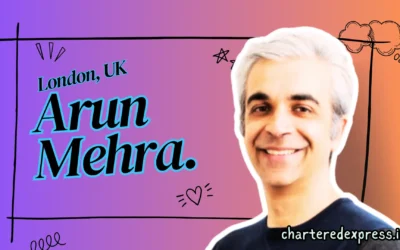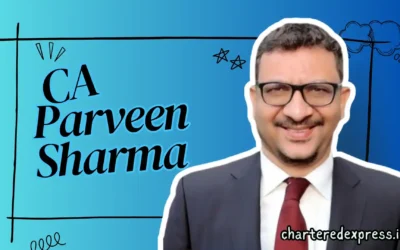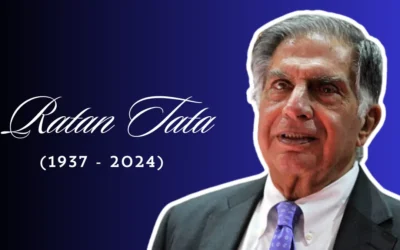Leadership is a complex and multi-faceted concept that requires a deep understanding of the nuances of human behavior and motivation. Every leader possesses a unique blend of qualities, traits, and characteristics that shape how they guide, direct, and influence others. Like an artist, a leader employs various techniques and styles to achieve their vision and drive results. In this blog post, we will explore leadership styles and how they impact those who lead and those who follow. Understanding these styles is pivotal not just for leaders but also for those they lead. So, let’s dive in and explore the fascinating world of leadership styles and 10 Common Leadership Styles.
Leadership is not a one-size-fits-all endeavor. Every leader possesses a unique blend of qualities, traits, and characteristics that shape how they guide, direct, and influence others. Much like an artist using different techniques to create a masterpiece, a leader adopts various styles to achieve their vision, motivate their team, and drive results. This is where the concept of leadership styles comes into play. Understanding these styles is pivotal not just for leaders but also for those they lead.
First, what is a leadership style? At its core, a leadership style is the manner and approach of providing direction, executing plans, and motivating people. It’s the strategy a leader employs to steer a group of individuals toward a common goal. Over the years, scholars and management experts have identified various styles, each with unique attributes, benefits, and potential drawbacks.
So, why exactly are these styles important? Let’s dive deeper:
- Self-awareness: Knowing one’s leadership style can bring heightened self-awareness, enabling leaders to play to their strengths and address their weaknesses.
- Flexibility: No two situations or teams are alike. Knowing various leadership styles allows leaders to adapt and modify their approach to fit diverse scenarios.
- Effective Communication: Leaders attuned to their style can communicate more effectively, ensuring their team remains aligned, informed, and motivated.
- Improved Team Dynamics: Recognizing and understanding leadership styles enables better team dynamics. Employees thrive under certain leadership styles and flounder under others. Being able to pivot ensures a harmonious and productive environment.
- Enhanced Decision Making: Some decisions require a democratic approach, while others require an autocratic one. Understanding when to employ a specific style is crucial in decision-making processes.
- Career Growth: As individuals climb the corporate ladder or look to start their businesses, grasping different leadership styles can be a significant asset. It can help in mentoring, coaching, and, most importantly, leading.
- Improved Organizational Culture: An organization’s culture is significantly influenced by the leadership style in play. For example, transformational leaders often foster an innovative environment, while transactional leaders might create a more structured, rule-based atmosphere.
- Employee Development: Different employees respond better to different leadership styles. By employing the right style, leaders can ensure the optimal development of their team members.
- Greater Efficiency: The appropriate leadership style can increase efficiency in operations. It ensures that everyone is working in sync and the right direction.
- Conflict Resolution: Conflicts are inevitable in any team or organization. A leader’s style plays a pivotal role in addressing and resolving conflicts.
In the grand tapestry of leadership, understanding these styles is analogous to an artist recognizing the various brushes at their disposal. Each style, like each brush, has its purpose. Knowing when and how to employ them can differentiate between a disjointed effort and a cohesive masterpiece.
Why Are Leadership Styles Important?
Leadership styles play a critical role in molding the direction and success of an organization or team. They dictate a leader’s approach in various situations, from decision-making and problem-solving to motivating and guiding team members. The importance of understanding these styles is multifaceted:
- Adaptability: Different situations demand different leadership approaches. Understanding various styles allows leaders to adapt seamlessly.
- Improved Relationships: By aligning their style with the needs and preferences of their team, leaders can build stronger, more trusting relationships.
- Efficiency & Productivity: The right style can drive efficiency, ensuring the team works cohesively and effectively towards their goals.
- Employee Satisfaction & Retention: Employees who feel understood and valued are likelier to remain loyal to the organization and perform at their best.
In essence, leadership styles are not just about the leader. They’re about fostering an environment where the leader and the team can flourish. Recognizing and harnessing the power of these styles is integral to the success of any leadership endeavor.
Ten Most Common Leadership Styles: A Simple Guide
Navigating the world of leadership can sometimes feel like sailing through a vast sea with various tides and currents. Each leadership style, akin to a tide, steers the ship differently. To make this journey smoother, let’s delve into the ten most prevalent leadership styles, their essence, and real-world examples:
- Coach: Think of a coach in sports. They’re the ones observing, guiding, and motivating their players. Similarly, a coaching leader identifies team strengths and weaknesses and helps individuals improve. While immensely beneficial, it demands time.
Example: A sales manager gathers the team after a quarter, assessing performance, recognizing achievements, and setting goals for the next quarter.
- Visionary: Visionary leaders are the torchbearers of change. With a clear vision, they inspire and earn trust, fostering bonds within the organization.
Example: A teacher initiating a work group to address student anxieties, aiming to enhance their focus in school with innovative testing methods.
- Servant: Prioritizing the team’s needs, servant leaders believe in a people-first approach. Such leaders are revered and respected due to their commitment to employee satisfaction.
Example: A product manager setting aside monthly sessions to address concerns related to a product, ensuring users feel valued and heard.
- Autocratic: Direct and focused, autocratic leaders are all about results. They make decisions swiftly, often without extensive consultations, resembling military commanders.
Example: A surgeon briefing her team about operational procedures, ensuring precision and adherence to rules.
- Laissez-faire or Hands-off: In direct contrast to autocratic leaders, the laissez-faire style gives team members freedom, expecting them to take ownership. It’s ideal for seasoned teams.
Example: Keisha, a manager, allows her engineers to set their schedules and take on projects of interest.
- Democratic: Balancing autocratic and laissez-faire approaches, democratic leaders foster participation. They value input, leading to increased team engagement and satisfaction.
Example: Jack, a store manager, consulting his team on store designs and only stepping in as a final moderator.
- Pacesetter: Prioritizing performance, pacesetters set high standards and push their teams to meet them. They are the momentum drivers.
Example: A leader revamping a drawn-out meeting into a concise, efficient stand-up to achieve results faster.
- Transformational: Centered on the organization’s overall objectives, transformational leaders energize their teams, ensuring everyone aligns with the bigger picture.
Example: After understanding her marketing team’s strengths and market trends, Reyna sets clear objectives to guide their efforts.
- Transactional: Focusing on performance, transactional leaders set clear rewards for success and penalties for failures. They blend motivation with accountability.
Example: A bank manager motivating the team with bonuses, ensuring they meet monthly targets.
- Bureaucratic: Bureaucratic leaders emphasize procedures and rules. Every task has a clear protocol, making this style perfect for regulated sectors.
Example: DMV office managers emphasize a strict, ordered approach to tasks, ensuring consistent outcomes.
In the vast sea of leadership, it’s not unusual for leaders to adopt multiple styles based on situations and team dynamics. The key is understanding the essence of each style and applying it judiciously to navigate the ship successfully.





















































0 Comments